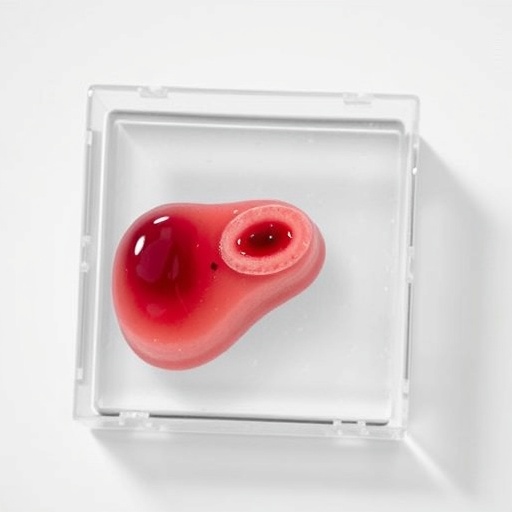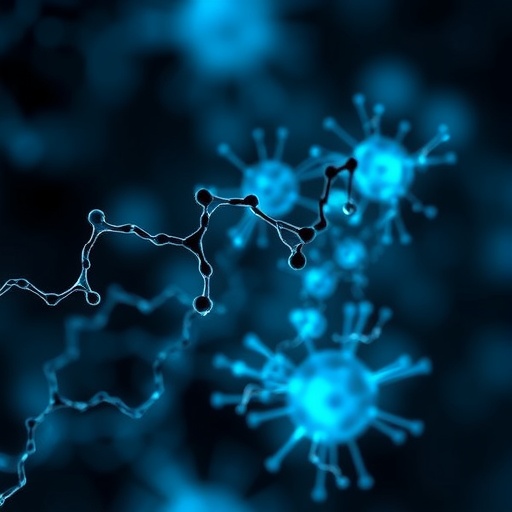PROTECT YOUR DNA WITH QUANTUM TECHNOLOGY
Orgo-Life the new way to the future Advertising by Adpathway
In the quest for sustainable practices and eco-friendly solutions, researchers have been turning their attention to the valorization of waste materials. One such material garnering attention is spent coffee grounds (SCG), a biomass byproduct generated in enormous quantities worldwide. Recent studies illuminate the potential of Deep Eutectic Solvents (DES) as innovative extraction mediums for valuable compounds from spent coffee grounds. In a groundbreaking review by da Silva, Lemes, and Ribeiro, the application of DES in enhancing the extraction process is explored, positioning this method as a game changer in the biorefinery landscape.
Coffee is one of the most consumed beverages globally, with millions of tons of coffee grounds discarded annually. Traditionally viewed as waste, spent coffee grounds are rich in bioactive compounds such as antioxidants, phenolics, and caffeine, which possess considerable health benefits and commercial value. However, the challenge has always been how to efficiently extract these compounds for use in diverse applications ranging from food additives to pharmaceuticals. The emergence of Deep Eutectic Solvents offers a revolutionary approach to overcoming the limitations of conventional extraction methods.
Deep Eutectic Solvents are a class of solvents formed by mixing two or more components, which, when combined, create a compound with a melting point lower than that of its individual constituents. This unique characteristic allows DES to serve as an effective extraction medium, providing a greener alternative to traditional organic solvents that are often toxic and environmentally harmful. As noted in the review by da Silva et al., DES are not only biodegradable and non-toxic but also exhibit remarkable solvation properties, enhancing the extraction yield of high-value compounds from spent coffee grounds.
The review highlights various types of DES, including those composed of natural and non-toxic compounds. Choline chloride, for instance, is a widely used hydrogen-bond acceptor, often paired with hydrogen-bond donors such as urea or various sugars to form eutectic mixtures. These combinations can be tailored to optimize the extraction of specific compounds, making DES a versatile option for researchers aiming to isolate certain antioxidants or oils from spent coffee grounds.
When examining the efficiency of extraction techniques, the review emphasizes that traditional methods such as Soxhlet extraction or solid-liquid extraction often fall short in terms of yield and selectivity. The application of DES transforms this narrative, allowing for higher extraction efficiencies while reducing the use of hazardous solvents. By leveraging the unique properties of DES, researchers can fine-tune the extraction process, ensuring maximum recovery of biocomponents.
Furthermore, sustainable practices in food and beverage industries are becoming increasingly important. Coffee companies are under pressure to minimize waste and find innovative solutions to utilize byproducts. The utilization of spent coffee grounds through the DES extraction process not only contributes to waste reduction but also opens up new revenue streams by extracting valuable compounds that can be repurposed in various applications. This aligns with a broader eco-conscious movement that prioritizes resource efficiency.
In terms of practical application, the review discusses several high-value compounds that can be extracted from spent coffee grounds using DES, including phenolic compounds, lipids, and cellulose. Phenolics are particularly noteworthy for their impressive antioxidant properties, which can be utilized in functional foods or nutraceutical formulations. Lipids derived from coffee grounds also hold promise in cosmetics and biolubricants, reflecting the expansive potential of valorizing SCG.
The research also delves into the scalability of the DES extraction process. While lab-scale experiments demonstrate the effectiveness of this method, the transition to industrial applications is crucial for widespread adoption. Researchers highlight the importance of partnering with industry stakeholders to address potential challenges in scaling up the process while maintaining efficiency and sustainability.
Moreover, the review addresses the economic factors surrounding the valorization of spent coffee grounds through DES. The initial investment required for developing DES-based extraction processes can be offset by the eventual commercialization of extracted bioactive compounds. With a growing demand for natural antioxidants and functional ingredients, the economic viability of utilizing spent coffee grounds as a resource becomes increasingly attractive.
As we look toward the future, the authors suggest that further research is needed to optimize DES formulations and extraction parameters. By continuing to refine these methods, pathways can be established for more efficient and sustainable extraction techniques that contribute to a circular economy. The potential applications of the valuable compounds extracted from spent coffee grounds are virtually limitless, spanning food production, pharmaceuticals, and cosmetic formulations.
The environmental impact of utilizing spent coffee grounds via DES extraction cannot be overstated. By reducing waste and creating value from what was once discarded, this innovative approach not only contributes to sustainable practices but also promotes awareness about resource conservation among consumers and industries alike.
In conclusion, the review by da Silva, Lemes, and Ribeiro serves as a comprehensive examination of the role of Deep Eutectic Solvents in extracting high-value compounds from spent coffee grounds. Their findings underscore the significance of employing environment-friendly methods to tap into the potential of what would otherwise be seen as waste. The implications of this research extend far beyond the laboratory, presenting a clear opportunity for industries to embrace circular economy principles that resonate in our parenthetical discussions about sustainability.
This exploration into the valorization of spent coffee grounds reminds us that innovation often lies in turning challenges into opportunities. The field of biomaterials and biorefinery is evolving rapidly, and with research like this, the future looks promising for sustainable solutions that harmonize human activity with nature.
Subject of Research: Valorization of spent coffee grounds using Deep Eutectic Solvents for high-value compound extraction.
Article Title: Deep Eutectic Solvents in the Valorization of Spent Coffee Grounds: A Review of High-Value Compound Extraction.
Article References:
da Silva, C.N., Lemes, A.C. & Ribeiro, B.D. Deep Eutectic Solvents in the Valorization of Spent Coffee Grounds: A Review of High-Value Compound Extraction.
Waste Biomass Valor (2025). https://doi.org/10.1007/s12649-025-03259-3
Image Credits: AI Generated
DOI:
Keywords: Spent coffee grounds, Deep Eutectic Solvents, extraction, bioactive compounds, sustainable practices, valorization.
Tags: antioxidants in coffee groundsbioactive compounds from coffeebiorefinery applicationscoffee waste recyclingcommercial value of SCGDeep Eutectic Solvents extractioneco-friendly waste managementefficient extraction techniqueshealth benefits of coffee compoundsinnovative extraction methodsspent coffee grounds valorizationsustainable practices


 4 hours ago
2
4 hours ago
2





















 English (US) ·
English (US) ·  French (CA) ·
French (CA) ·